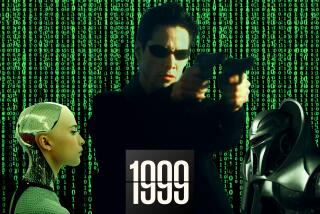NONFICTION - Feb. 28, 1993
- Share via
A DANCING MATRIX: Voyages Along the Viral Frontier by Robin Marantz Henig (Knopf: $23; 262 pp.). Portrayed as pirates hijacking cells in order to cause everything from colds to AIDS, viruses have never gotten very good press. Dictionaries define them unsympathetically (Webster’s: “anything that corrupts or poisons the mind or character; evil or harmful influence”), while the neologisms they have inspired (e.g., “computer virus”) are never flattering. In medical writer Robin Marantz Henig, however, these tiny, protein-coated genes have found their fairest biographer to date. Were it not for viruses, Henig explains, many species would not have been able to undergo the hereditary changes that have allowed them to survive. How did a flower and the butterfly that feeds on it get to have exactly the same yellow color? she asks. Perhaps because a virus carrying that yellow gene fell on both flower and butterfly, and the new adaptive feature of yellowness allowed each one to survive. Henig quotes Lewis Thomas’ observation that viruses, darting “rather like bees from organism to organism, from plant to insect to mammal to me and back again, pass around heredity as though at a great party.” This is not to say that Henig is unaware that such fun and games can kill. On the contrary, “A Dancing Matrix” persuasively polemicizes that today’s biologists, by peering ever more narrowly into the microscope, may have lost the broader environmental perspective they need to storm the next viral frontier.
More to Read
Sign up for our Book Club newsletter
Get the latest news, events and more from the Los Angeles Times Book Club, and help us get L.A. reading and talking.
You may occasionally receive promotional content from the Los Angeles Times.








